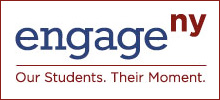11.5 - Industrialization and Urbanization
From EngageNY
The United States was transformed from an agrarian to an increasingly industrial and urbanized society. Although this transformation created new economic opportunities, it also created societal problems that were addressed by a variety of reform efforts.11.5a New technologies and economic models created rapid industrial growth and transformed the United States.
- Students will examine the technological innovations that facilitated industrialization, considering energy sources, natural resources, transportation, and communication.
- Students will examine the growth of industries under the leadership of businessmen such as John D. Rockefeller, Andrew Carnegie, J.P. Morgan, and Henry Ford and analyze their business practices and organizational structures.
- Students will evaluate the effectiveness of state and federal attempts to regulate business by examining the Supreme Court decision in Wabash, St. Louis & Pacific R.R. v. Illinois (1886), the Interstate Commerce Act (1887), the Sherman Antitrust Act (1890), and President Theodore Roosevelt’s trust-busting role as evidenced in Northern Securities Co. v. United States (1904).
- Students will examine demographic trends associated with urbanization and immigration between 1840 and 1920, including push-pull factors regarding Irish immigration and immigration from southern and eastern Europe.
- Students will examine problems faced by farmers between 1870 and 1900 and examine the goals and achievements of the Grange Movement and the Populist Party.
- Students will examine the attempts of workers to unionize from 1870 to 1920 in response to industrial working conditions, including the Knights of Labor, the American Federation of Labor, the American Railway Union, the International Ladies Garment Workers’ Union, and the Industrial Workers of the World, considering actions taken by the unions and the responses to these actions.
- Students will examine Progressive Era reforms, such as the 16th and 17th amendments (1913) and the establishment of the Federal Reserve System (1913).
- Students will examine the efforts of the woman’s suffrage movement after 1900, leading to ratification of the 19th amendment (1920).
- Students will trace the temperance and prohibition movements leading to the ratification of the 18th amendment (1919).
- Students will trace reform efforts by individuals and the consequences of those efforts, including:
- Jane Addams and Hull House
- Jacob Riis’ How the Other Half Lives
- New York Governor Theodore Roosevelt and the Tenement Reform Commission
- Upton Sinclair’s The Jungle and the Meat Inspection Act
- Margaret Sanger and birth control
- Ida Tarbell’s The History of the Standard Oil Company
- Ida Wells and her writings about lynching of African Americans
- Booker T. Washington's contributions to education, including the creation of Tuskegee Institute
- W.E.B. Du Bois and the founding of the National Association for the Advancement of Colored People (NAACP), the publication of The Crisis, and the Silent Protest (1917)
Learn more on Engage NY
EngageNY.org is developed and maintained by the New York State Education Department (NYSED) to support the implementation of key aspects of the New York State Board of Regents Reform Agenda.
This is the official web site for current materials and resources related to the Regents Reform Agenda. The agenda includes the implementation of the New York State P-12 Common Core Learning Standards (CCLS), Teacher and Leader Effectiveness (TLE), and Data-Driven Instruction (DDI). EngageNY.org is dedicated to providing educators across New York State with real-time, professional learning tools and resources to support educators in reaching the State’s vision for a college and career ready education for all students.














